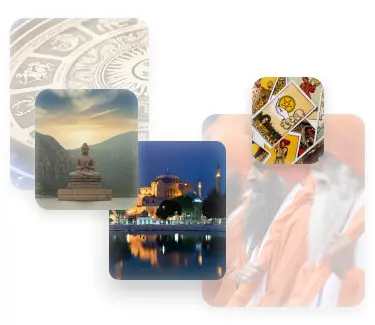The basic ideas of idealism in the context of animating nature arose in the period of the primitive communal system. The term itself appeared in the 18th century in the discourse of Leibniz, who analyzed Plato’s ideas.
Idealism
A philosophical worldview that is widespread throughout the territory of all five continents. The wide coverage and popularity of the teaching is associated with the relevance of religious and mystical ideas of idealism. In the 21st century, idealistic concepts are actively developing within the framework of theological concepts, including world religions (Christianity, Buddhism, Islam), as well as some esoteric trends.
The ideas of idealism are actively covered on the pages of peer-reviewed scientific and philosophical journals and religious press published on all five continents. The idealistic picture of the world is considered in the framework of TV shows, documentaries and videos shown on scientific and educational channels.
Brief history
The idea of the existence of an immaterial world is inextricably linked with the animation of nature within the framework of totemism, animism, fetishism and esotericism. At a later time, the idea of the existence of the spiritual world principle and the human soul took shape in the religions of the ancient East: Brahmanism and Buddhism.
The foundations of the modern understanding of idealism were laid by the ancient Greek thinker Plato. In his dialogues with his students, Plato identified two foundations of being: the material world, which can be known with the help of human senses (sight, touch, smell, hearing) and the world of eternal immaterial ideas. Within the framework of his concept, the philosopher sharply contrasted these two worlds, arguing that only the immaterial world of ideas is true. The world of sensible things was presented to them as a reflection or projection of the world of ideas, which is only a temporary phenomenon.
Subsequently, the idea of Plato and his followers was developed within the framework of Christianity. In this religious interpretation, God is represented as the true world of ideas, and the material earthly world is a kind of reflection of the divine world.
The further development of idealism in the Middle Ages is associated with the confrontation of two scholastic trends – nominalism and realism. Thus, nominalists argued that in reality there are only separate material objects (things). In turn, realists, in particular Thomas Aquinas, believed that general ideas exist separately from material embodiments. Thus, this conflict resulted in the definition of the objectively real – ideas or things.
Idealism acquired a significant development in the work of Descartes, who asked himself about the assessment of objective reality: do the material objects existing in the world really correspond to our ideas about them?
The modern interpretation of idealism took shape with the development of the German school. Kant, Fichte, Schelling, and then Hegel proposed the interpretation of the idea as an absolute truth that can be comprehended by man only speculatively.
The essence
The primacy of the ideal (spiritual) world over the physical (material) world is considered within the framework of idealism. The primary in this philosophical system is God (the universal spirit, the Absolute, the spiritual origin). At the same time, the ideal world, as a rule, is recognized as the only true reality, while material objects and objects are recognized only as a product or reflection of eternal ideas.
There are two basic currents of idealism in the history of philosophy:
Objective idealism. Within the framework of this system, the possibility of cognizability of the world through human feelings and practical experience is denied. The universal ideal (spiritual) principle, which exists objectively, regardless of the existence of the person himself, is considered as the fundamental principle of the world. The spiritual principle (idea) creates the world of material objects and things, as well as human consciousness.
Subjective idealism. This philosophical system denies the existence of a physical material reality independent of human consciousness. It is believed that the world is only a complex of experiences, sensations, emotions, which are purely individual and depend on the structure of consciousness of the person himself. The extreme form is solipsism, which asserts that only those phenomena and events that a person feels in a given period of time are real.
Biography of the creators
Plato (428-347 BC). Athenian philosopher, born into a family of aristocrats, engaged in wrestling and became an Olympic champion in wrestling pankration. A student of Socrates, he lived in Sicily for some time, and then returned to Athens, where he created his own philosophical school – Academy. The author of the cycle “Dialogues of Plato”, the founder of a number of political and social doctrines.
Rene Descartes (1596 -1650). French thinker, mathematician, one of the founders of the doctrine of Modern times. Born in the family of a judge, he received a religious education at a Jesuit college. He was engaged in mathematics and philosophy, the author of a number of works in which he outlined his vision of idealism. He died of pneumonia (according to some reports, he was poisoned).
Georg Wilhelm Hegel (1770 -1831). German thinker, one of the central figures of German idealism and Western philosophy of Modern times. He was born in a wealthy family, received a brilliant education, was fond of literature. He taught at the University of Jena, then at the universities of Heidelberg and Berlin. The author of the concept of absolute idealism and dialectics.
Modern Leaders
Currently, the concept of idealism is developing within the framework of spiritual-religious and metaphysical concepts. The crisis of man-made civilization and the liberal system of values pushes modern society to spiritual search and appeal to a mystical understanding of the world.
Scandals
Idealism is in eternal conflict with materialism (the main question of philosophy). This confrontation escalated during the Middle Ages due to the active development of science and natural science, due to serious ideological conflicts. In recent times, the conflict has unfolded between the church and official science. The confrontation between evolutionists and adherents of creationism (the theory of intelligent design) in the late 20th and early 21st centuries is especially significant.



 RU
RU
